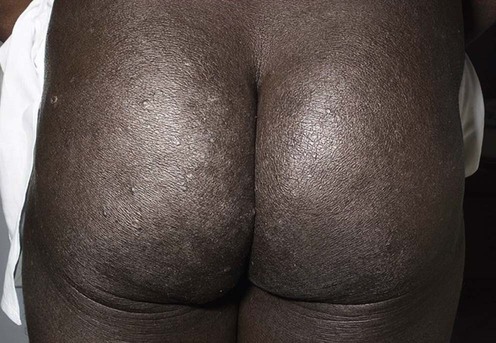Onchocerciasis

First-line therapies
Other therapies
WHO researchers start trial on a new drug for river blindness.
The Bill and Melinda Gates Foundation is supporting research to optimize treatment regimens (Death of Onchocerciasis and Lymphatic Filariasis, DOLF; www.dolf.wustl.edu). Studies include attempts to reformulate flubendazole, a known effective macrofilaricide, in order to improve its bioavailability.






 Ivermectin
Ivermectin Ivermectin combined with doxycycline
Ivermectin combined with doxycycline Albendazole
Albendazole Suramin
Suramin Future therapies: new macrofilaricides
Future therapies: new macrofilaricides